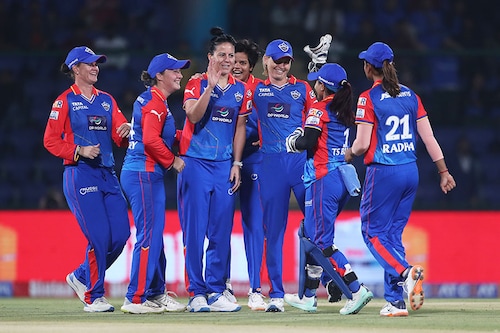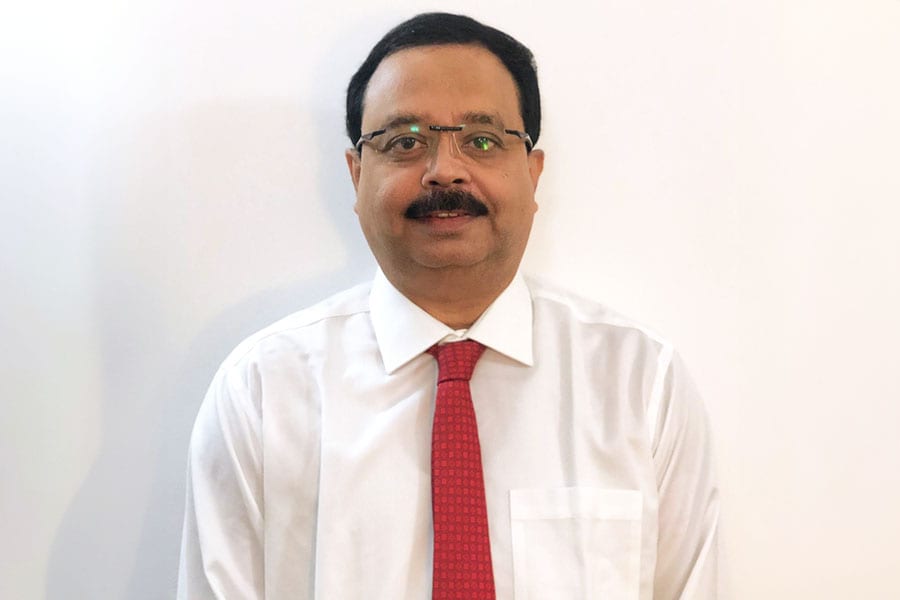Team sports bring in higher viewership than individual sports: PKSV Sagar of GMR
The CEO of GMR League Games, the co-owners of Delhi Capitals, is looking to expand the portfolio through team sports and cricket


After having spent around three decades in the manufacturing industry, PKSV Sagar is now on to building something else: Sports. As the CEO of GMR League Games, he"s now charting out the growth of the six sports franchises owned by GMR. In an episode of Sports UnLtd, Sagar takes us through the sports journey of the conglomerate, why it plans to expand its global sports portfolio through cricket, and how it is giving back by investing in homegrown splits. Edited excerpts:
Q. You assumed office as the head of GMR Sport about a year ago. What were the key priorities you set for yourself?
I have worked for about 32 years in the manufacturing industry, which was process-driven and had clear guidelines. Then I joined GMR as the chief of staff for the founder-chairman, GM Rao in 2018. Sports has always been my passion, so when this opportunity came I said there can’t be a better way to mix profession with passion.
[After I assumed my office], we said a couple of things. First, while we own some franchises and run one, at the end of the day, it"s a business for an entity. So, how do we structure it? If you don"t really put your guidelines and boundaries to sport, it can just go haywire because there are multiple things happening at the same time. Delhi Capitals is a franchise we own 50 percent. It’s the largest sports asset that GMR Sports has besides that, we have a lot of other franchises and business development areas. Once we set up the processes, we asked what is our vision forward? To look at increasing franchises in multi-player opportunities in India, and, if we are to go out of India, the foray should be cricket-driven. That"s the larger strategy we set up. And we are now at a point to launch on our vision, and the organisation is well settled for a roadmap for the next 3-5 years.
Q. How is leading and growing a sports company different from leading and growing manufacturing companies?
Today manufacturing is more developed—it"s very system-oriented, especially if you"re working with multinationals. The person is not important, the systems are already drawn. You’ve got to see that you maintain the systems. So it"s chartered territory. Moving to GMR and handling infrastructure, especially working with the chairman for four years, was pretty unchartered. This is a $4-5 billion business, a lot of debt, lot of cash flows, huge projects, timelines and there"s one chairman operating 24/7, 365 days, and I was his hands and ears as his chief of staff.
Sports is still in its infancy in India, if you keep the IPL beast aside. Most of the other leagues are trying to gather their feet, more like a startup industry trying to grow. A lot of youngsters want to join in, so there is a lot of grooming that"s required. I believe that people like me who come from industries, have varied experiences, can really groom sports into a vertical, and build it as organised as a manufacturing industry.
 PKSV Sagar, CEO of GMR League Games
PKSV Sagar, CEO of GMR League Games
Q. Can you give us a peek into the global roadmap that you spoke about?
Since last year, since I"ve come, there have been some developments in our portfolio. We won a bid for a team in the Women’s Premier League (WPL). There’s also the Major League Cricket (MLC) that started in the US, we are a minority investor in the Seattle Orcas where Microsoft head Satya Nadella is a prime investor, along with 3-4 of his colleagues. We will be looking into the operations of the team, which we also did last year with good success. Going forward, while I can"t divulge much, the intent is to look for such opportunities in other parts of the world.
Q. There is a proliferation of franchise leagues in India. GMR Sports has six such franchises in its portfolio. What makes franchise leagues tick in India?
I think the basis goes back again to cricket and the way IPL opened up avenues for franchisees. But having said that, if someone is building around the franchisee model of IPL, that"s not the way to go forward because IPL and cricket are a different category altogether. However, I will give you an example of how kabaddi went about. The Pro Kabaddi League (PKL) is in its 10th season now, and has gone through the pains of a startup. It has had change of ownership, but they have still maintained the tempo, except during the brief Covid season. Then there’s kho-kho in its second season, another league we’ve invested in. These are the sports which got lost in transition. The beauty about these sports is that these are low cost in playing and they are popular if you can put them on a great media map. And that"s exactly what these leagues did—they took up these sports and created an avenue of professionalising it. You see how kabaddi has slowly moved into the second rank after the IPL as far as viewership is concerned.
However, there are other leagues which have not really come up. Football has been struggling, a hockey league has shut, so has a badminton league. So there is no clear formula as to what will succeed and what will not. Which is why, if you go back to our strategy, we spoke about multi-player sports. We feel an individual sport tends not to get that kind of viewership as a multi-player sport does. Which is why even the volleyball league is doing well. Football might have been an exception here, but that might be because India gets to see so much of world football.
Q. The long-term success of these leagues hinges on them making money for everybody. Can you give us a sense of how the business model is evolving?
Yes, that"s a very good question because I know, at the end of the day, the business model needs to succeed. But what we have seen is it"s like any typical startup—that"s why I keep saying startup all the time with reference to sports—because they have their gestation periods to recover costs. The sport takes time to evolve, to bring in sponsorship, audience, viewership, revenues of various forms. The IPL also, for all the glamour that it had, took 10 years to bring cashflows on the table for the owners. The same is with kabaddi. So 5-10 years is the normal time period for any of these leagues to break even and make money. But, even after 10 years, not everyone starts making money the way IPL did because of the soaring media rights values. The promoters need to have passion and patience with the franchisee sports model. Not just in India, but abroad too, if you see the P&L of the MLC franchisees, no one is going to make money. But the owners believe they are creating value. So, at one point, it also becomes a valuation model, and not a cash-flow model. If you put both of these together, then it"s a long-term investment, and you do have to have somewhat deep pockets to run these leagues.
Q. When it comes to scaling up, while the IPL has seen exponential growth, what about indigenous sports like kabaddi and kho-kho? What was the rationale behind picking up teams in those leagues?
I can say at least for GMR, it"s not always about business at the end of the day. We do also take a lot of corporate social responsibility. There"s a lot that our chairman does. In fact, he has pledged all his personal wealth to the foundation linked to the GMR group. When we entered kabaddi and kho-kho, we said why not bring back these sports back on the roadmap of India. With the leadership of our current Prime Minister Narendra Modi, sports has got a lot of push, and it’s not only cricket. We said why not contribute to that. When it comes to P&Ls, we tend not to compare with IPL—if you do that, you will be not doing any other sport. We wanted to give back to society in some form. If I may add here, it’s not just about owning franchises. In kabaddi and kho-kho, we are running academies—as we speak, we have two wonderful academies in Meerut where children are taught on cost. So, in a way, these sports are tending to give back to society.
Q. Do you see increased brand awareness and sponsor engagement coming in for these sports? Can you give us a snapshot of how these have grown year on year?
To be honest, we are in the first year post-Covid, and it"s been a very good year. To give you some numbers, we filled all our slots in kabaddi. Yes, revenue-wise it could have been better, but then we have to give it that this was a cricket World Cup year, where a lot of sponsors had channelled their budgets. And then they usually keep reserves for IPL. In between the World Cup and IPL, you have kabaddi and kho-kho leagues, where we managed to fill all our slots—that by itself is a success. Going forward, I"m sure if cricket doesn"t have a major event, except the IPL, these sports are going to pick up on the sponsorship front.
First Published: Mar 08, 2024, 10:43
Subscribe Now